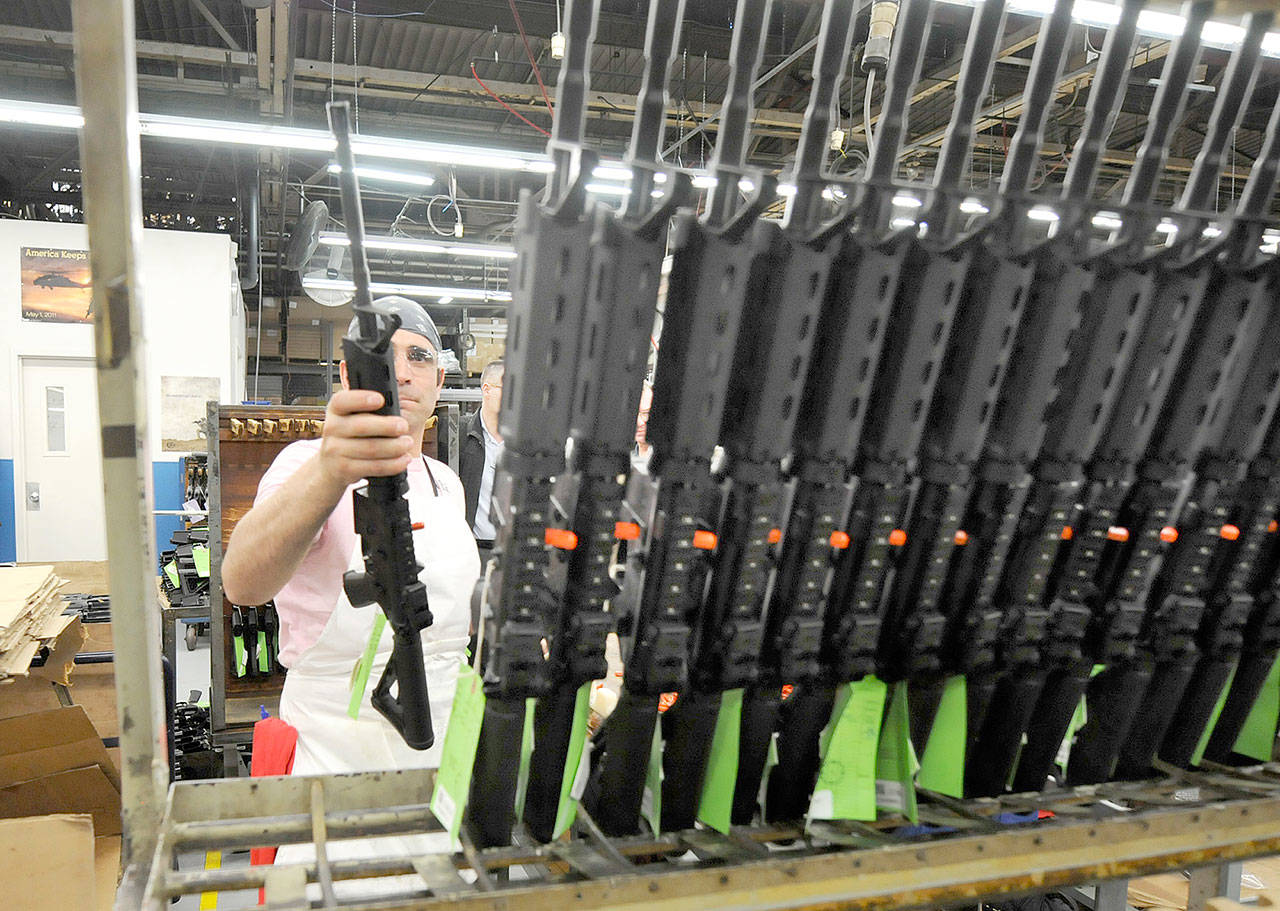HARTFORD, Conn. — Colt’s Manufacturing Co. is suspending production of rifles for the civilian market, including the popular AR-15 used in fatal mass shootings and that figures prominently in a national debate between advocates for gun rights and gun control.
The West Hartford, Conn., gunmaker pushed back Thursday against what it says is false information that it’s bailing out of the civilian market entirely.
“The fact of the matter is that over the last few years, the market for modern sporting rifles has experienced significant excess manufacturing capacity,” Chief Executive Officer Dennis Veilleux said in a news release. “On the other hand, our warfighters and law enforcement personnel continue to demand Colt rifles and we are fortunate enough to have been awarded significant military and law enforcement contracts.”
These “high-volume contracts” are taking up all of Colt’s manufacturing capacity for rifles, Veilleux said.
“At the end of the day, we believe it is good sense to follow consumer demand and to adjust as market dynamics change,” he said. “Colt has been a stout supporter of the Second Amendment for over 180 years, remains so and will continue to provide its customers with the finest quality firearms in the world.”
The National Shooting Sports Foundation, an industry group based in Newtown, says the AR-15 is not an assault weapon, which it says is a fully automatic firearm akin to a machine gun that will keep firing until the magazine is emptied.
Mark Oliva, spokesman at the NSSF, said the AR-15 is the most popular selling centerfire rifle, with 16 million in private hands. A centerfire cartridge is one that has a primer in the center of the cartridge case head. The primer is a separate and replaceable component.
It’s used for hunting and self-defense and continues to be manufactured by Smith and Wesson, Ruger, Savage Arms and other gunmakers, he said. A gun owner used an AR-15 to stop the gunman behind a deadly Texas church shooting in November 2017.
Oliva would not speak for Colt’s, but said the company may be responding to a “very competitive market.” He pointed to the company’s announcement that it will continue to produce Colt’s rifles for military and law enforcement as evidence of its continued commitment to manufacturing the rifle.
The AR-15 was developed as a replacement for the World War II-era M-1, and was further developed and industrialized by Colt Firearms in Hartford in the 1960s, largely as the M-16 military rifle in the early years.
The rifle first became familiar during the Vietnam War, through grainy, televised images of the M-16, which was the military version of the AR-15. That was followed by a string of high-profile incidents and movies such as “Rambo” in the 1980s, an end to imports of the Uzi and the AK-47 in 1989 and a partial federal ban on semi-automatic firearms in 1994, the wars in Iraq and Afghanistan, with returning servicemen eager to have their own versions of the rifles they carried and increasing use of realistic video games and a target-shooting sport called “three-gun competition.”
“It’s America’s rifle,” said Christopher Bartocci, a former Colt’s employee who wrote “Black Rifle II,” the second volume of a two-book, illustrated history of the AR-15/M-16. “It’s as American as anything there is — apple pie and football.”



